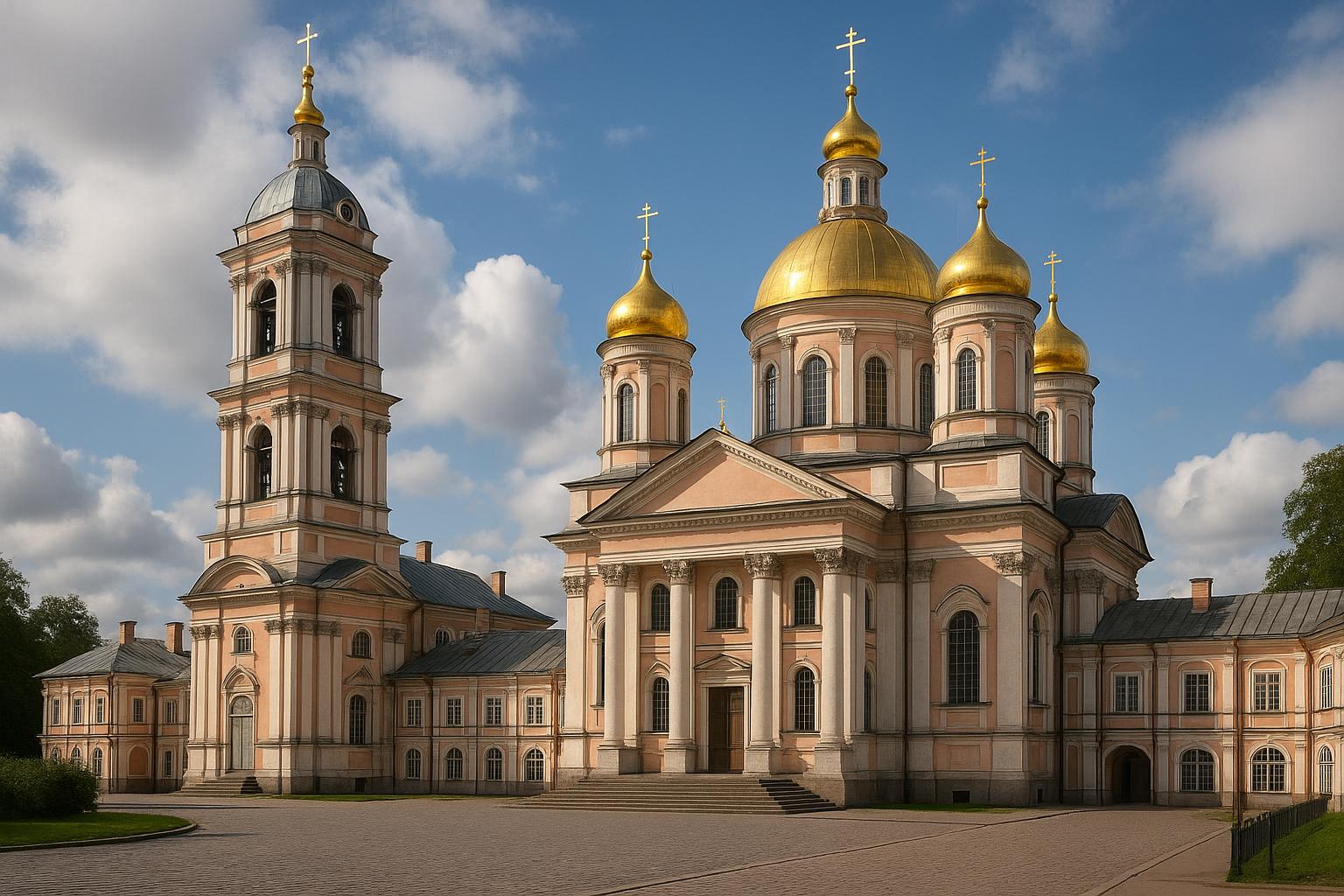The Alexander Nevsky Monastery is an eminent religious and historical institution situated in the vibrant city of St. Petersburg, Russia. This remarkable site dates back to 1710 when it was founded by Peter the Great. A potent visionary, Peter established the monastery to honor the 13th-century Russian prince and formidable military leader, Alexander Nevsky. The founding of the monastery was a dual-purpose endeavor—serving as both a spiritual haven and a strategic military bastion aimed at protecting the newly minted capital of Russia from threats and invasions.
Historical Overview
The initiation of the Alexander Nevsky Monastery stemmed from Peter the Great’s astute vision of St. Petersburg not just as the new capital but as a western-facing stronghold of Russian power. Rooted in the backdrop of a tumultuous period characterized by territorial expansion and military confrontations, the founding of the monastery signified a harmonious blend of spiritual nourishment and military preparedness. It was strategically positioned to fortify defenses and serve as a central hub for ecclesiastical activities, merging the spiritual and worldly realms under one domain.
Architectural Significance
The architectural splendor of the Alexander Nevsky Monastery reveals an expansive elegy to varied styles that were prominent in the 18th and 19th centuries. The complex dazzles with structures that encapsulate Baroque, Neoclassical, and traditional Russian ecclesiastical architecture. The Annunciation Church, completed in 1724, stands as a testament to the Baroque style that was embraced during Peter the Great’s epoch. Distinctive with its ornate detailing and grandiose structure, the church encapsulates the aesthetic values prevalent during the early 18th century.
Over the years, the monastery underwent several architectural evolutions, with notable additions that further enriched its historical footprint. One such landmark is the Holy Trinity Cathedral, an elegant masterpiece of Neoclassical design conceived by the architect Ivan Starov. Completed towards the end of the 18th century, the cathedral symbolizes the stylistic transitions of that era. Its impressive proportions and restrained elegance reflect the growing trend towards purity and simplicity in architectural design, which was a hallmark of Neoclassicism.
Religious Role
The Alexander Nevsky Monastery’s religious significance is deeply entrenched in the heart of the Russian Orthodox tradition. Serving as the residence of the metropolitan of St. Petersburg and Ladoga, it plays an active role in the ecclesiastical hierarchy. The monastery is not solely a forerunner in theological activities but also functions as a vigorous center for spiritual education and religious observances. Profoundly sacred, it shelters several treasured relics, including what are believed to be the remains of Saint Alexander Nevsky, transferred to this holy site in 1724 by the behest of Peter the Great himself.
These relics, revered for their spiritual authority, draw pilgrims and believers who seek solace and divine intercession. The monastery, therefore, holds a place of reverence and is a symbol of enduring faith and commitment to spiritual continuity within the Russian Orthodox Church.
Cultural Influence
Beyond its spiritual and architectural grandeur, the Alexander Nevsky Monastery is a beacon of Russian cultural and intellectual advancement. The monastery emerged as a nurturing ground for artists, writers, scientists, and scholars, making it a microcosm of Russia’s vibrant cultural dynamism. The exchange of ideas within its walls has contributed to its legacy as a center of learning and a harbinger of cultural renaissance.
The monastery is home to the Tikhvin Cemetery, a site of quiet contemplation, which has been consecrated as the resting place for an array of Russia’s luminary figures. Esteemed personalities such as the gifted composer Pyotr Ilyich Tchaikovsky and the brilliant novelist Fyodor Dostoevsky have been interred here, rendering the cemetery as much a cultural gallery as it is a place of repose.
Visitation and Tourism
In contemporary times, the Alexander Nevsky Monastery transcends its central religious and cultural roles to welcome visitors and tourists from across the globe. As an accessible portal to Russian history and spiritual practice, the monastery provides a well-rounded experience filled with intrigue and exploration. Guided tours offered on-site present an integrated understanding of not only the monastery’s own history but also its place within the broader tapestry of Russian cultural and religious ethos.
For those planning visits, the monastery maintains a structured schedule and provides resources to enhance the visitor experience. Detailed visiting hours and further information, including guided tour specifics and special events, are typically updated and accessible through the official website of the monastery or through reliable local tourism resources.
The Alexander Nevsky Monastery remains a poignant and powerful symbol in Russia. It serves as a living monument to the strategic vision of Peter the Great, a significant religious sanctuary, and a nurturing hub of cultural and intellectual endeavors. Its majestic architecture and deep-rooted traditions continue to captivate and inspire those who walk through its venerable halls, offering a meeting place of the spirit and the intellect in the heart of St. Petersburg.

